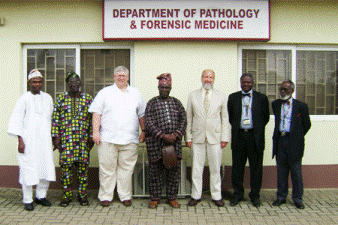Natural Resources, School of

Karl Reinhard Publications
Document Type
Article
Date of this Version
2023
Citation
Journal of Forensic and Legal Medicine (2023) 93: 102471
doi: 10.1016/j.jflm.2022.102471
Abstract
Neurocysticercosis is endemic in many parts of the underdeveloped and developing countries, with continuous presence in developed countries due to the influx of migrants from regions where the diseases are endemic. Neuroimaging, anatomic pathological techniques, immunodiagnostic tests, clinical examination and epidemiologic considerations will easily provide the diagnosis. However, physicians in developed countries are perhaps progressively missing the diagnosis, and need to re-acquaint themselves with the condition and acquire a high suspicion index. The authors present a medicolegal case where the forensic team made a conclusion of neurocysticercosis (among other diagnoses), following post mortem examination of a largely skeletonized and mummified human remains. Characteristic changes were observed in the calvarium of the decedent at autopsy. Review of the antemortem medical records revealed that Computed Tomography (CT) scan had 12 years earlier, suggested diagnostic features in a Hispanic migrant, but the attending surgeons failed to consider the possibility of the condition. Physicians should pay attention to suggestive clinical findings especially when attending to individuals coming from endemic parts of the world. Cysticercosis remains endemic and a misdiagnosis can potentially attract medical malpractice suits. Forensic pathologists should also consider the possibility of uncommon clinical disorders, even in skeletonized remains. Perhaps an earlier diagnosis might have altered the outcome in the decedent.
Included in
Archaeological Anthropology Commons, Ecology and Evolutionary Biology Commons, Environmental Public Health Commons, Other Public Health Commons, Parasitology Commons


Comments
Copyright © 2022, Elsevier. Used by permission.